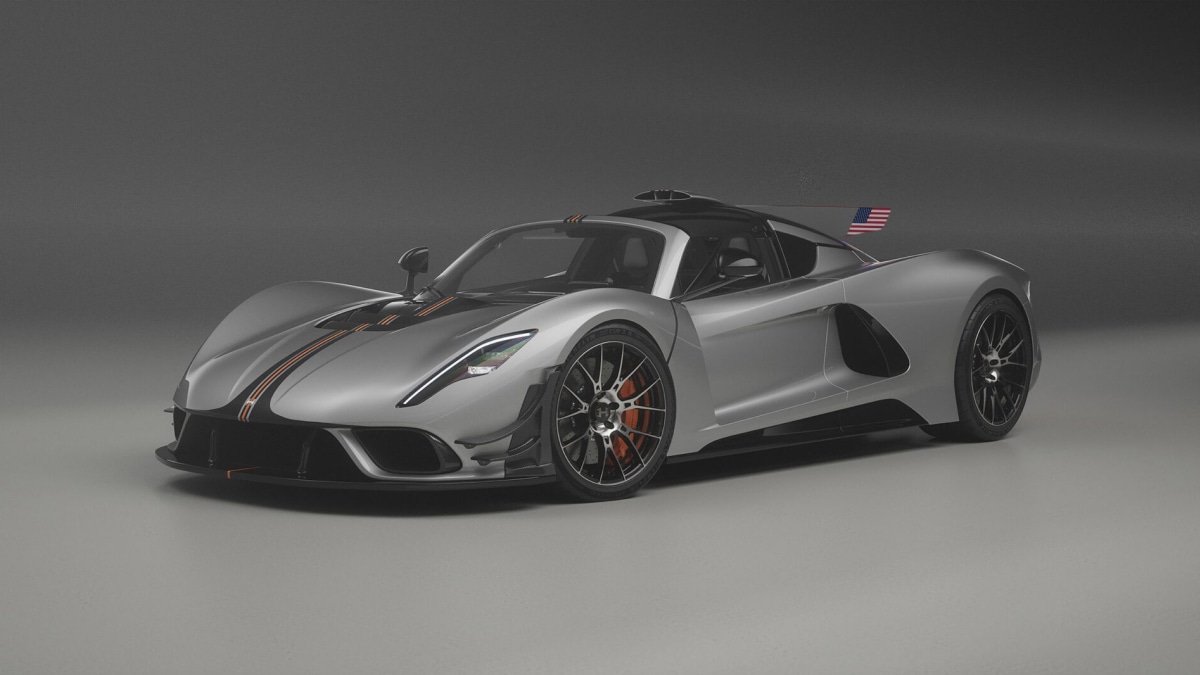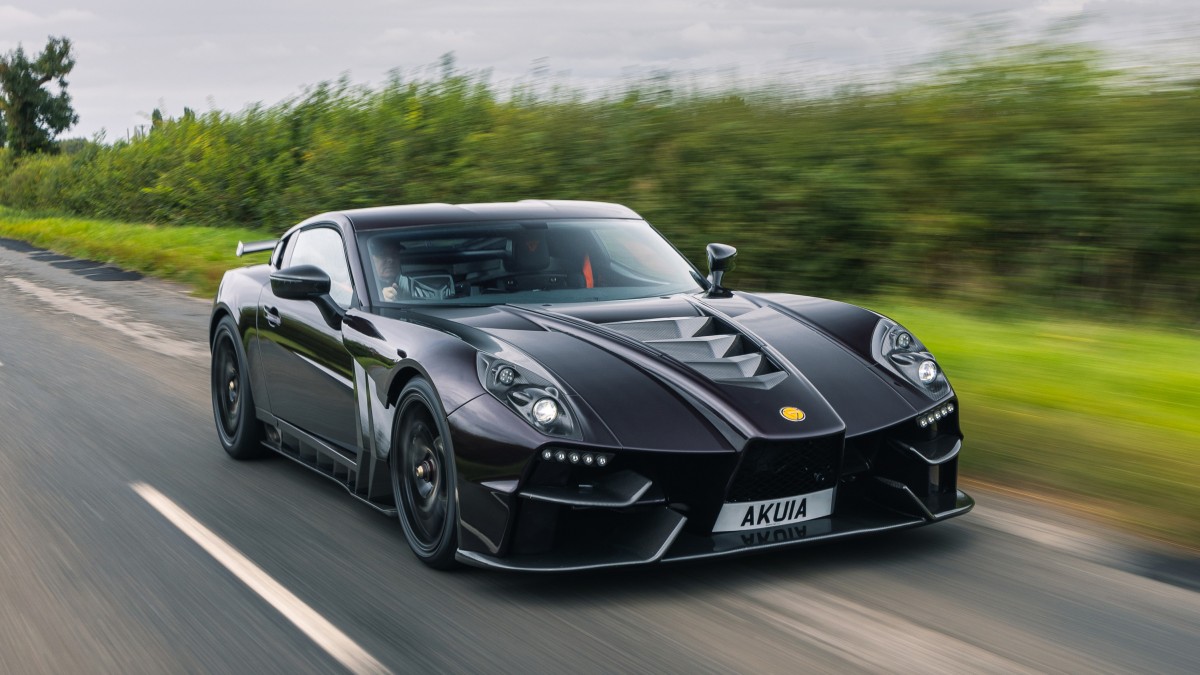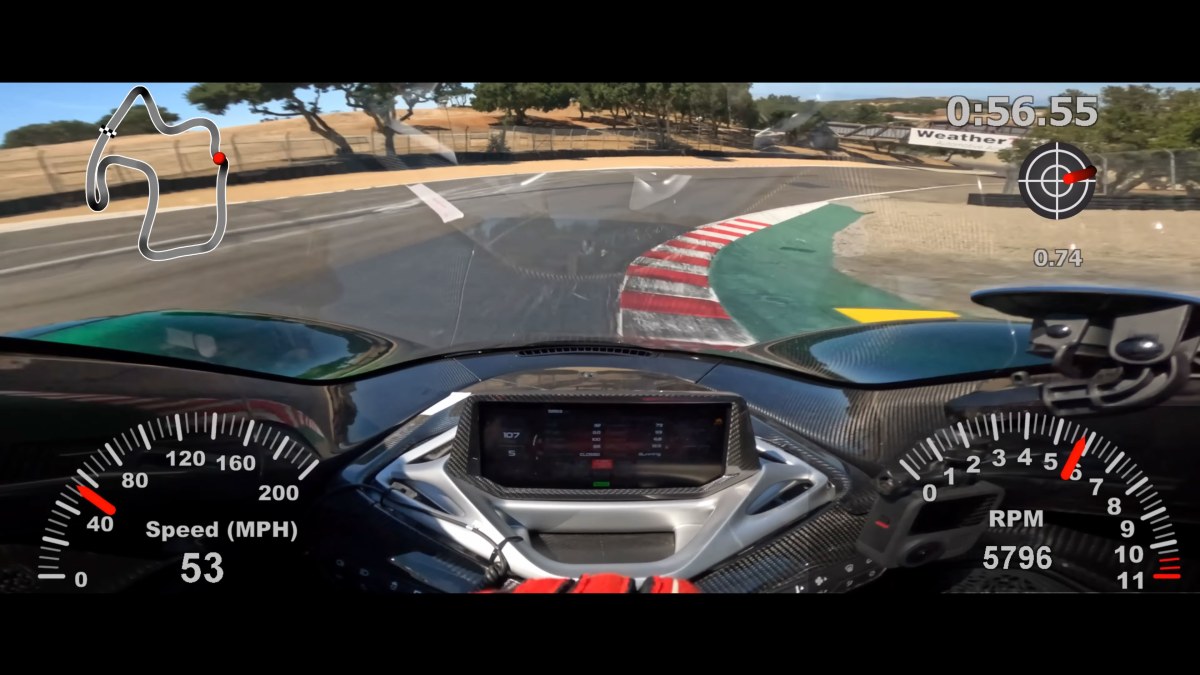Over the past year or so, the Gordon Murray Design T.50 has been taking shape, from its F1-inspired V12 to its wild fan-assisted active aerodynamics. Now the car has been fully revealed as the machine Murray says is meant to be the “greatest analog driver’s car” ever. And based on the feature set, we’d say it has a good chance of meeting that goal.
The body and chassis are entirely made of carbon fiber, and as a whole, the car is similarly sized to a Porsche 718 Boxster. The design has some clear McLaren F1 cues, which is unsurprising since Murray was responsible for that supercar. The headlights, front fascia, roof scoop and split engine access panels are particularly reminiscent of the F1. The roof scoop also has a function where certain panels will conduct intake noise into the cabin, but they’re only engaged under heavy throttle to keep the cabin civilized when cruising. There’s significantly more glass area around the cockpit, though, and the rear fascia is unique, particularly with the big round fan opening, which we’ll return to in a minute. The whole car is incredibly light, too, at just 2,174 pounds.
In the engine bay is a 3.9-liter V12 developed and built by Cosworth. It’s completely naturally aspirated and makes 654 horsepower and 344 pound-feet of torque. Redline is 12,100 rpm, and peak power arrives not far from it at 11,500 rpm. Peak torque is available at a (slightly) more accessible level of 9,000 rpm. The engine can go from idle to redline in just three tenths of a second. The engine is apparently the lightest V12 ever used in a road-going car at 392 pounds, something that was achieved with the aluminum block and titanium connecting rods, intake and exhaust valves and clutch housing, as well as entirely gear-driven camshafts and accessories. Furthermore, the engine is the most power-dense naturally aspirated engine with 164 horsepower per liter. The engine is paired with a lightweight six-speed manual transmission and powers only the rear wheels.
The aerodynamics are equally impressive. The centerpiece is the aforementioned fan that pulls air through different ducts in the car. When pulling air through the lower ducts, fed by vertical intakes with filters to keep debris from damaging the fan, downforce is increased. It can also pull from upper ducts that combine with the fan’s rear exhaust to, aerodynamically-speaking, lengthen the car’s body and reduce drag. There are also adjustable diffuser valves and spoilers that are all controlled via different aerodynamic modes. The Automatic and Braking modes operate automatically depending on driving situations. High Downforce mode activates the fan and lower ducts and angles the rear spoilers more for 50% more downforce over Automatic. Streamline mode activates the upper ducts and fan at high speed, partially closes some of the diffuser valves and lowers the spoilers to instead reduce drag by 12.5%. There’s also a V-Max Boost mode that uses the Streamline settings, but also has the 48-volt electric starter/generator power the fan briefly to reduce parasitic losses on the engine. When using this mode at high speed, engine power climbs to 690 horses.
The suspension and brakes of the T.50 are comparatively simple. Double-wishbone suspension is used at all four corners and is made with forged aluminum components. Steering is a rack-and-pinion setup and only has power assist at low speeds, dropping the assist at higher speeds for maximum road feel. The Brembo brakes are carbon ceramic all around with six-piston calipers and 14.5-inch rotors at the front and four-piston calipers with 13.4-inch rotors at the back. Forged, center-lock aluminum wheels are fitted with Michelin Pilot Sport 4 S tires.
The interior is yet another throwback to the McLaren F1 with its center driving position flanked by two passenger seats. The driver has an analog tachometer smack dab in the middle with screens on either side and aluminum knobs and buttons for various controls. To the right is a little console jutting out with the shifter mechanism made of titanium. The clutch and brake pedals are made of aluminum and the throttle pedal is made of titanium. All three seats are formed from carbon fiber. The cabin isn’t a completely barebones, uncompromising affair. It features a 700-watt 10-speaker sound system and standard Apple CarPlay and Android Auto. Each customer also gets a fitting session to have the seats and pedals placed in the most comfortable location possible.
Only 100 Gordon Murray T.50s will be built. Last we heard, there were still a few vehicles available, but you’ll need 2.36 million pounds to buy one, or $3.08 million at current exchange rates. Production begins in January 2022 with deliveries happening a little later. And the whole car, including its engine and various components, are all developed and built in Britain.
Related Video:



